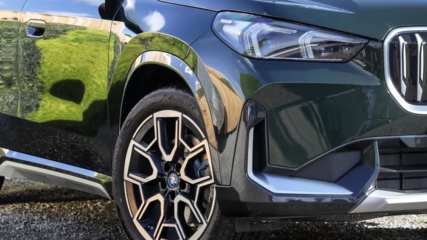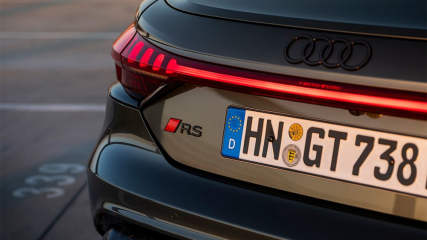Tim Nicholson's top 5 cars of 2024: A big year for electric cars and hybrids, but is the new-gen Toyota Camry really as good as a Polestar 4 or Audi e-tron GT?
By Tim Nicholson · 23 Dec 2024
Another year of new-model launches is behind us, and 2024 has been another doozy.While this past year is notable for the number of models that were scheduled for launch but still haven’t arrived, there were some big names making big waves.Throughout the year I have driven some cars that truly surprised me, and others that were real let-downs. But for this article I am solely focusing on the good ones, because why would I want to end the year on a negative note?For clarity, our various CarsGuide ‘top cars’ articles are focused on vehicles that brought each individual journalist the most joy this year. That doesn’t necessarily mean the model launched in the past 12 months — we might have only had the chance to drive them in that period.Following last year’s list, my 2024 best of is a mix of some possibly obvious choices, and some that are perhaps a bit more left of field.Let’s not waste any more time. Here are the cars I loved most in 2024, in alphabetical order.In September, I drove the updated 2025 Audi e-tron GT on home turf in Germany, not far from Frankfurt and stopping off for the night in Heilbronn, where the vehicle is produced.I hadn’t driven the pre-facelift model but heard good things, notably from my colleague Tom White. I have driven a number of grades of the mechanically related Porsche Taycan, and while I have great affection for that car, I fell deeply in love with the Audi.Where the Porsche is a more focussed sports car, the Audi is more of a grand tourer. It still has breathtaking performance, but it offers a level of comfort that surprises.Beyond its phenomenal on-road performance, the e-tron GT is superbly designed and has a striking and inviting interior.I’ll leave you with the second-last line from my Audi e-tron GT review to summarise;“The e-tron GT is one of the most deeply impressive cars I have ever driven.”Including a new Mustang on a best-of list? I know, groundbreaking, right?But this car had to be on my list.The new-gen Ford Mustang is based on old underpinnings but honestly, I don’t care. I’m just thrilled that Ford can still build this car in the age of electrification.I spent a week with a Mustang GT Convertible, which is only offered in auto guise. I am still yet to drive a manual Mustang, but, again, I don’t care. The 10-speed auto is a brilliant match for the delicious 345kW/550Nm 5.0-litre V8.I am not really a V8 guy these days, and I am not a fan of obnoxiously loud engines, but man it was fun to scare the neighbours with an overzealous rev or two.The interior is much better than the previous Mustang and while it’s not perfect (what is with the pretend old-school handbrake?) I loved every second I had with this car.I drove the Jeep Avenger EV in Italy a few months back and, to be honest, I wasn’t expecting much given some of Jeep’s current crop of models leave me cold.But it turns out there is something so charming about Jeep’s first electric vehicle that it was one of the first cars to make it onto my list this year.The exterior design is simple yet edgy, and while it has a distinct Jeep flavour it’s very modern. The thoughtful Jeepisms like the plastic bootlip to avoid scratching the paint when loading a bike in the back, or setback headlights to mitigate against damage in a collision just add to the charm of the little SUV.It’s no sports car but it is brisk, comfortable and — importantly — engaging to drive. I couldn’t wait to get behind the wheel again.There’s a reason the Jeep Avenger won European Car of the Year. It’s an adorable, capable and functional city EV. Before you put a deposit down on one of the many affordable small EVs hitting the market, go check out the Avenger. It’s the coolest Jeep I’ve ever driven.The Polestar 4 is the EV brand’s first medium SUV and it follows the larger and pricier Polestar 3 SUV to market. But there are big differences between the two models.This is a Tesla Model Y rival, but it is much more premium than Tesla can manage. It’s also a lot more interesting.A striking exterior design lures you in before you realise something’s missing — a rear windscreen. Instead, it has a camera with vision displayed on a digital screen where the interior rear-view mirror goes.Despite this feature being tech for tech’s sake, the Polestar 4 is seriously impressive.It has excellent real-world driving range, a serious focus on sustainability, a spacious and gorgeously designed interior, and the exact same standard features list in both the Single Motor and Dual Motor grades. The only caveat there is that there are a lot of options and option packs that can push the price out.But if you’re tech savvy, value good design and a genuine focus on sustainability, the Polestar 4 is hard to beat.As someone who grew up obsessing over cars and has been in automotive media for more than 12 years, I did not see this coming.But I am here to tell you, dear reader, the new ninth-generation Toyota Camry is that good!It’s easy to dismiss the Camry as the Uber driver’s car of choice, or the sort of vehicle your grandpa drives, but after a week behind the wheel of the SL grade I am convinced it’s one of the best cars released this year.The hybrid powertrain (there’s no petrol-only grades anymore) is smoother than before, it’s still incredibly efficient and it has the best ride quality of any car I have driven this year. In even more surprising news, it’s actually pretty fun to drive on twisty roads as well.Of course the cabin is spacious and there’s plenty of room for cargo too.This is truly all the family car most people will need. Forget the dreary reputation of Camrys past. Because this big sedan has got its mojo back.Hyundai Santa Fe - Well isn’t this a bold new look? While it might be too bold for some, the new-gen Santa Fe improves on what was already an excellent family SUV and takes its place at the top of the segment.Lexus LBX - The latest Lexus model is also the smallest, but that doesn’t mean it’s any less premium. The LBX looks sharp, has hot hatch vibes and was one of my clear favourites this year. Bring on the spicy Morizo RR version!Mini Countryman - In its third generation, the Mini Countryman finally grows up into a family friendly small SUV. In a win for value for money, the entry-level petrol grades are just as compelling as the higher-end EV variants.Peugeot 408 - A cousin to the Citroen C5 X (RIP Citroen), the 408 is plug-in hybrid only and one of the most striking cars to launch this year. It ain’t cheap but it’s a joy to drive and it offers buyers a sleek European alternative to all of the generic small SUVs.Renault Megane E-Tech - I have only just driven this spunky French EV but I am already in love. Stunning exterior design, a surprisingly spacious interior and keener pricing combine with a joyful drive experience. Renault is on the march, finally!


 (1).jpg)





.jpg)